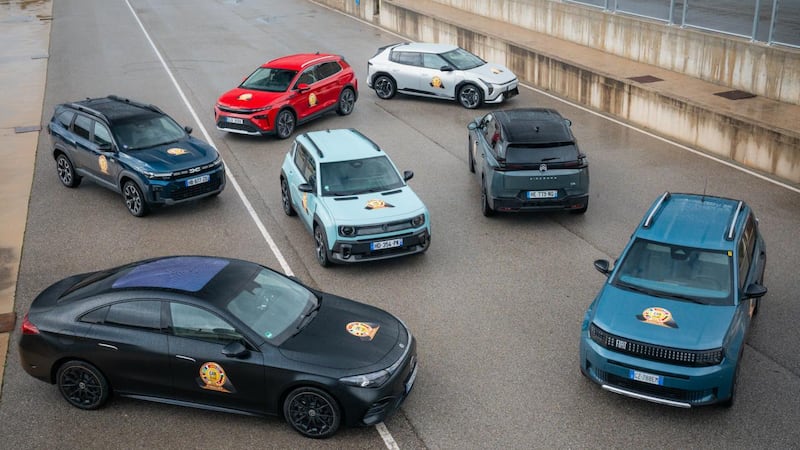With the first gusts of (ex) Hurricane Ophelia touching the coasts, we’re about to see half-a-year’s worth of rainfall drop on us in about a day. Even though the winds should pass over by tonight, waterlogged roads are going to be a problem for the next few days at least.
Obviously, our best advice to you is simply not to go out. Schools are closed, many businesses are shut, so why not just wrap up warm with a pot of tea and a box-set of something diverting on Netflix? At least until the power goes out, and then we guess it’s time to break out the Monopoly.
If, though, you do have no choice but to venture out, here are the best tips for dealing with flooded roads.
First and foremost, if you can turn around safely and find another route, do so. It’s always better to avoid floods than to try and tackle them.
Assuming you can’t safely or reasonably do that, then remember that it’s all about building steady momentum from the moment you enter the water. First though, check and see how actually deep the water is. Pack a pair of wellies and, if it’s safe to do so, get out and walk ahead to check the depth of the water. Anything more than 25cm is really too deep to safely tackle in a standard car, that’s about half-way up your shin, if you’re of average height. If the water is flowing or fast-moving, be very. very wary. As little as 30cm of moving water can be enough to sweep a car off the road.
If it seems okay, then keep the car in first gear or, at most, second gear (those driving an automatic should use manual or ‘sport’ mode to lock out upchanges) and enter the water nice and steady. Keep the revs up (it keeps pressure in the exhaust which helps to stop water flowing up it), but the speed as slow as you can, at first. Then, steadily, gently, build up a bit of momentum. Watch the car’s bow-wave, and try and make sure it stays in sight as if you start to overtake it, water can slosh into the engine bay and down the air intake. If it’s a particularly long flood, try to carefully time your acceleration, as you don’t want to be going too fast by the time you come to the end of it. Also, don’t ride the clutch, only control your speed with the accelerator and brake, or you won’t be properly in control of the car.
Try and keep to the middle of the road, if possible, not merely because that’s where the shallowest water will be, but because the verges and edges of the road are easily washed away by heavy rain. Also, beware of natural dips in the road where deeper water will gather.
As you come to the end of the flood, start to ease off a little don’t rush out, displacing lots of water - that just makes things harder for anyone coming behind you.
Also, don't assume that because you're in a 4x4 or SUV that you can go charging in, heedless. Proper off-roaders, such as those built by Toyota, Land Rover and Jeep, can usually cope with between 500mm and 900mm of standing water, but most modern crossovers and SUVs are actually car-based, and not half so rugged as they look. They usually lack the high-set air-intakes of proper off-roading machinery, so refer to your owners' handbook to check the car's maximum wading depth.
If it all goes wrong, put your hazard lights on and call for a recovery service. Don’t try and push the car out of the flood yourself, and focus instead on making sure that you and your passengers get to a point of safety.
If your route takes you near the coast, try to consider an alternative that takes you more inland, as tidal surges and high waves can often break over coastal roads, and these can be far more destructive than standing water. Beware of parking anywhere near the coast today as well, or near tidal estuaries.
















